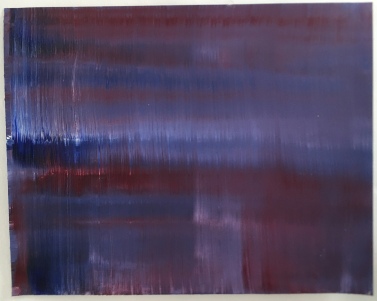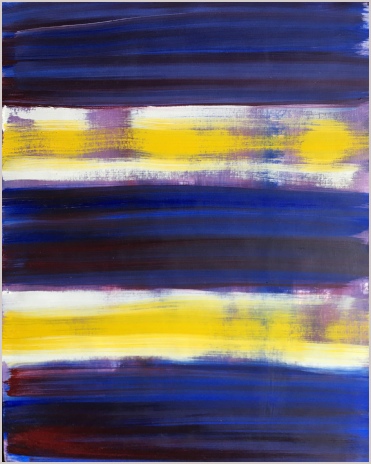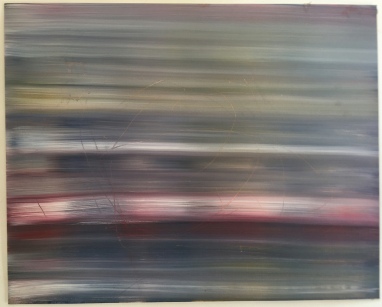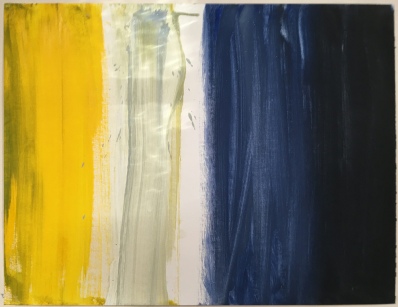Another Timbre TimHarrisonbre
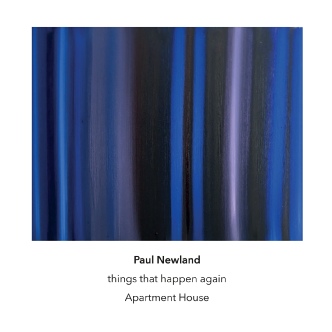
at219 Paul Newland ‘things that happen again’
Five chamber works played by Apartment House
1 monotonous forest (2009) 12:10
Siwan Rhys, piano George Barton, vibraphone & cowbells Anton Lukoszevieze, cello
2 things that happen again (again) (2017) 9:54
Mira Benjamin, violin Anton Lukoszevieze, cello Ben Smith, piano
3 locus (2013) 12:20
Heather Roche, clarinet Gavin Morrison, alto flute Chihiro Ono, violin Anton Lukoszevieze, cello
Paul Newland, objects & field recordings George Barton, percussion Simon Reynell, field recordings
4 difference is everywhere (altered again) (2023) 23:50
Mira Benjamin & Gordon MacKay, violins Bridget Carey, viola Anton Lukoszevieze, cello
5 Laurence Crane on Whitecross St (2021) 3:46
Paul Newland, piano
Interview with Paul Newland
Can you tell us about the pieces on the CD, starting with 'monotonous forest', the oldest piece on the disc. How did that come about, and - 15 years on - does it still feel recognisably yours?
Ian Vine and Tim Benjamin, composers I knew from Manchester, asked me to write a
piece for their ensemble Radius. Jo Kondo had written Holzwege around that time,
and that sparked an interest in Heidegger and the idea of forest paths and wandering,
and perhaps even becoming lost or disoriented in a landscape that feels self-similar
etc. The piece is in five movements, although this isn’t really apparent to the listener
as they’re not strongly contrasting and the music feels continuous except where there
are written silences which sometimes break the flow or frame things - attention to
flow, the slowness and the falling are all still very familiar territory for me as
is the use of silence and the layering of things that unfold at different rates.
I also really enjoy unisons.
What about 'things that happen again (again)': how
did that come about, and why the unusual title?
I wrote this in the summer whilst staying in Japan. It was a particularly hot summer
that year and for some reason that really remains strongly in my mind. The piece
is broadly in two halves. In the second half the listener encounters all the same
material as heard in the first; it’s the same, except that this time, in the second
half, the instruments have become uncoupled from each other, things are no longer
sounding together. Things that happen again is also the title of an art-work by Roni
Horn which consists of two identical cone-shaped solid copper cylinders placed either
in separate spaces or at a distance from each other, so that the viewer is unable
to see both simultaneously. Choreographer Marina Collard introduced me to this piece.
Regarding the “(again)” in brackets of the title. In the past, often one piece has
led to another - I’m sure this is a familiar situation for everyone, i.e. you find
something while writing a piece that then becomes the subject for the next. However,
more recently I’ve begun writing pieces in batches, and where a collection or series
of pieces have concerns that are extremely similar, I give them the same title but
need a way to differentiate them. In this instance this is the second version of things
that happen again hence the addition of (again) in brackets to designate that it’s
a second iteration of the piece. I’m very interested in pairs and multiples of things.
The piece was premiered as part of MWLTH 2017 by Mira Benjamin (violin), Anton Lukoszevieze
('cello) and Philip Thomas (piano) at St Mary-at-Hill London.
There are several versions
of 'locus' online, but all sounding very different because it's such an open score.
Can you explain how it works - and have you composed a lot of 'open' scores?
Oliver Leith asked me to write a piece for an event he was organising and I wanted to create a score that somehow encapsulated in the most distilled form possible my long-standing interest in repetition and the overlaying of loops moving at different speeds/rates and/or of different lengths. I wanted to generate a kind of blue-print or more precisely a kind of proto-type piece I guess (except obviously this is a prototype that’s coming after all the works that I’ve written previously, not before). After quite a bit of thought, I wrote the score whilst travelling into London on the train one day. The score invites performers to collect/find/prepare and then play 1,2 or 3 sounds which they then repeat, each separated by silences, the durations of these sounds and silences being chosen by the player from listed divisions of 3 minutes.
I’m very interested in open scores, I particularly enjoy how open scores and text
scores strongly foreground concept, material and performativity, and deal, often
very overtly, with the interweaving (and entanglement) of these. I really enjoy the
self-reflexive quality that prose and open scores can conjure and evoke. This often
provokes important questions about making/listening etc. The process of generating
these kind of scores, of finding the most succinct way in which to express them as
well as finding the appropriate balance between clarity and ambiguity really fascinates
me. locus was premiered at The Old Operating Theatre London (2013) David Arrowsmith
(guitar), Paul Newland (guitar), Ryusuke Koarashi (bowed objects) and Oliver Leith
(field recordings).
The string quartet, 'difference is everywhere (altered again)':
again, can you explain the title and does it relate to your earlier quartets?
This quartet is the third in a series of quartets all written since 2017 which share very similar concerns and in many ways are re-iterations of each other (as mentioned above). They are: difference is everywhere, difference is everywhere (altered), and difference is everywhere (altered again). The words of the title “difference is everywhere” are from Antoine Beuger in his interview with James Saunders.
For a long time, by this point, I’d been continuously trying to pare things down in my work, in an attempt to cultivate a kind of close listening to the material surface and surface qualities of the sound as well as the temporal qualities of any given piece.
Antonie Beuger’s words caught my attention and somehow, for me, perhaps point to a quality in the material as well as a quality inherent in the type of listening experience (encounter) that I’m searching for, or attempting to cultivate in my work, a sort of listening-in which can begin to arise as the material is pared down, reduced, fragmented, slowed, stretched, blurred, re-examined, woven, repeated, spun, simplified, while at the same time seeking to remove anything inessential, as well as continuing to raise questions relating to conventions of form and flow etc. As a result I think a space can open up - a space for the listener as well as for the sounds themselves. I’m very interested in this sense of presence, the presence of the sounds, the presence of the silence, the presence of the players - a field of experience that might initially feel quite empty can slowly begin to feel more detailed as we begin to notice or pay attention to small things, small sounds or shifts in the sound or bow etc. - Things that we might normally miss; I enjoy paying attention to these things.
And while a sense of stillness might help focus our listening in a particular way, I’m really interested in the not-quite-stillness when something is just happening, or something just manages to keep moving forward, on the edge of stopping, but not....or hovering on the edge of just sounding/moving/being still. Hearing a sound that might be a deliberate part of the piece, or is it a sound that is actually a part of the environment in which the piece is taking place? - where does one begin and the other end? - Any sort of ambiguity seems very rich to me, and a good place to be.
Having said all this, I feel ultimately though that , when I’m actually writing or
playing, I really like to just follow my instincts, and let things unfold and go
where they feel like they need to go and not worry too much about anything at all
too directly but just to be listening.
Finally the short piano piece, 'Laurence Crane
on Whitecross St'. Again, it's rather unlike the other pieces on the CD, but is
it representative of one aspect of your compositional work? What were the circumstances
of its composition?
These kind of triadic harmonies are present in some of my previous pieces (particularly
piano pieces e.g. nagahama fragments) but don’t appear so regularly perhaps. During
Covid I got into the habit of playing at the piano and if you like, taking a chord
for a walk, so starting with a triad and then moving to the next but with the simple
rule of keeping one or two of the notes fixed from the previous chord, and then just
following your nose, and seeing where you go with no concern for tonal functional
harmony but just enjoying the feeling and sound of the shift from one to the next.
After a while I realised there was probably a piece here and I wanted to write it
down. I wanted capture the feeling that although at first it might feel like it’s
moving forward and going somewhere actually that’s an illusion and it just keeps
ending up in the same sort of place again and going around and around in different
ways in long loops – and then towards the end it gradually slowly sinks down… At
the time I realised Laurence was about to celebrate perhaps a not insignificant birthday
so I made it as a birthday gift for him. The connecting of places and people in titles
is something I know Laurence enjoys.
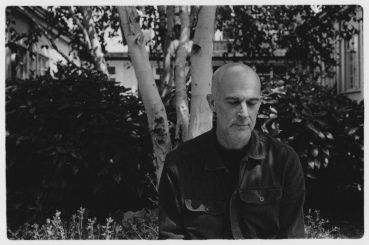
Paul Newland
Photograph by Anton Lukoszevieze
Artworks by Paul Newland
